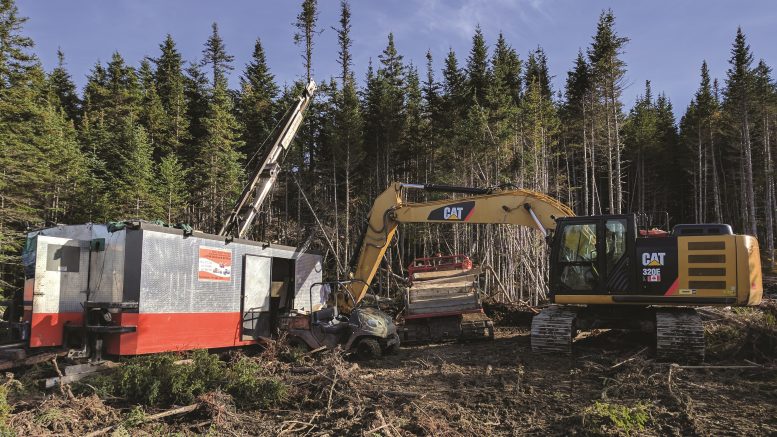The latest drill results from the Berry zone, within the 6-km long Sprite corridor at Marathon Gold’s (TSX: MOZ) Valentine gold project, extend the strike length of this area of mineralization to 650 metres, from approximately 450 metres previously.
The highlight intercepts include 47 metres of 2.96 grams gold per tonne starting at 166 metres; 30 metres of 2.23 grams gold per tonne from 121 metres; as well as 20 metres of 2.12 grams gold per tonne starting at 174 metres.
The mineralization in the drill holes is within quartz-tourmaline-pyrite-gold veins in the hangingwall of the Valentine Lake shear zone, the company said, with the latest drilling focused on tracing the mineralization in 50-metre sections.
“Our 2020 exploration program is focused on new discovery, with broad step-out holes into previously untested areas,” Matt Manson, the company’s president and CEO, said in a press release.
Manson explained that one rig is stepping out to the northeast from the Berry zone, with a second drill, expected to start in September, scheduled for exploration to the southwest, from the margin of the Marathon deposit, within the 6-km long Sprite corridor.
“At the end of this campaign, we will have drilling information along the full 6 km of the Sprite corridor between Leprechaun and Marathon,” Manson said. “This is high-risk, greenfield exploration, with no certainty of success. However, the results achieved to date at the Berry zone give confidence in the potential for additional discoveries along this highly prospective trend.”
Eight of the nine holes reported returned intersections greater than 0.7 gram gold, with all of the intercepts returning intersections in excess of the 0.3 gram gold per tonne cutoff grade used in the company’s latest resource estimate for the project, which was published in January.
The Valentine project features four shear-zone hosted gold deposits within a 20-km long trend. Measured and indicated resources stand at 54.9 million tonnes at 1.75 grams gold for a total of 3.1 million oz., with additional inferred resources of 16.8 million tonnes at 1.78 grams gold for a further 1 million ounces.
In April, the company released a prefeasibility study for Valentine, which outlines a 12-year open pit and conventional milling operation producing an average of 175,000 oz. gold annually in the first nine years of operation. With an initial capital cost of $272 million and average life-of-mine, all-in sustaining costs of US$739 per oz., the net present value of the project, at a 5% discount rate, was estimated at $472 million, based on a US$1,350 per oz. gold price, with a 36% internal rate of return.
A feasibility study for the project is expected next year.
At press time in Toronto, Marathon Gold was trading at $2.53 per share, within a 52-week range of 71¢ and $2.58. The company has 206 million common shares outstanding for a $519-million market capitalization.
— This article first appeared in the Canadian Mining Journal. The Northern Miner and The Canadian Mining Journal are part of Glacier Resource Innovation Group.


Be the first to comment on "Marathon Gold extends Berry zone at Valentine"